In the post-war heyday of the revolver, it was common for police and armed citizens to load a different kind of ammunition for practice than they did for duty or defense. In the police community, for example, many officers shot their training and qualifications with soft-recoiling, 148 grain, .38 Special wadcutters, and loaded more powerful .38 Special or .357 Magnum ammunition for duty, and a legion of armed citizens without badges did the same.
Seeing the light
From a certain perspective, this made sense. The wadcutters typically used less lead and powder, so they were a more economical choice than the loads with heavier bullets and propellant charges. Too, the sharp-edged wadcutters cut a nice, clean hole in the paper, making it easier to score the bullseye targets that were still the mainstay of most law enforcement, military and armed citizen training at the time.
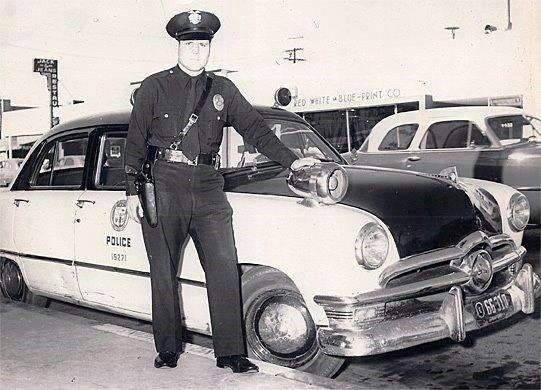
This LAPD officer would have done all his training with wadcutters, and loaded 158 grain Round Nose Lead for the street. Photo courtesy of Vintage LA Coppers, http://www.vintagelacoppers.org
Then, there was the comfort. Shooting a few boxes of .357 Magnum in a single session was a bit of work (particularly in the early days, before the industry decided to download the cartridge a bit), and with some of the lousy grips and stocks of the era, it could be fatiguing and uncomfortable. A revolver with “splinter” stocks and no grip adapter could really buck and squirm when shooting 158 grain, .357 Magnum soft point loads, and was much more pleasant to shoot with 148 grain, .38 Special wadcutters. Even .38 Special, 158 grain, round-nose lead (RNL) kicked more than the wadcutters, making it harder to shoot those high scores that everyone wanted.
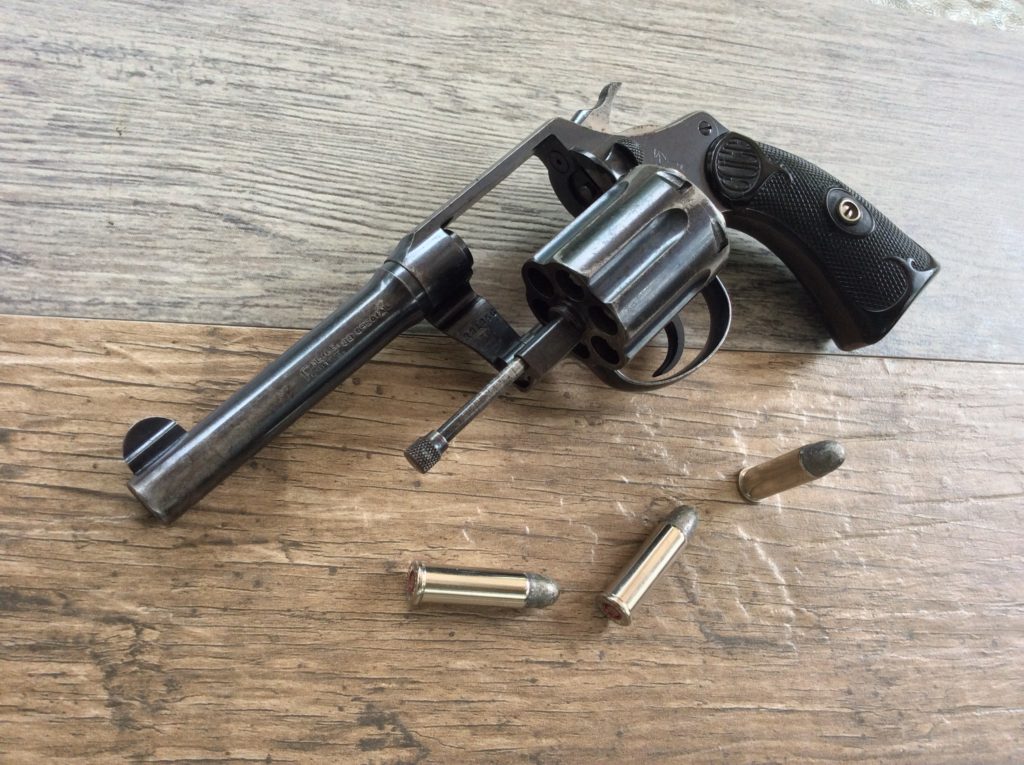
Target grade, 148 grain wadcutters were more pleasant to shoot than heavier, service grade, loads like 158 grain Round Nose Lead–especially in lightweight guns like this Colt Police Positive.
So, hordes of lawmen and armed citizens bowed to economy and comfort, and did a majority (sometimes all) off their shooting with the light stuff, but shoved the unfamiliar, heavy stuff into their chambers when they loaded up “for real.”
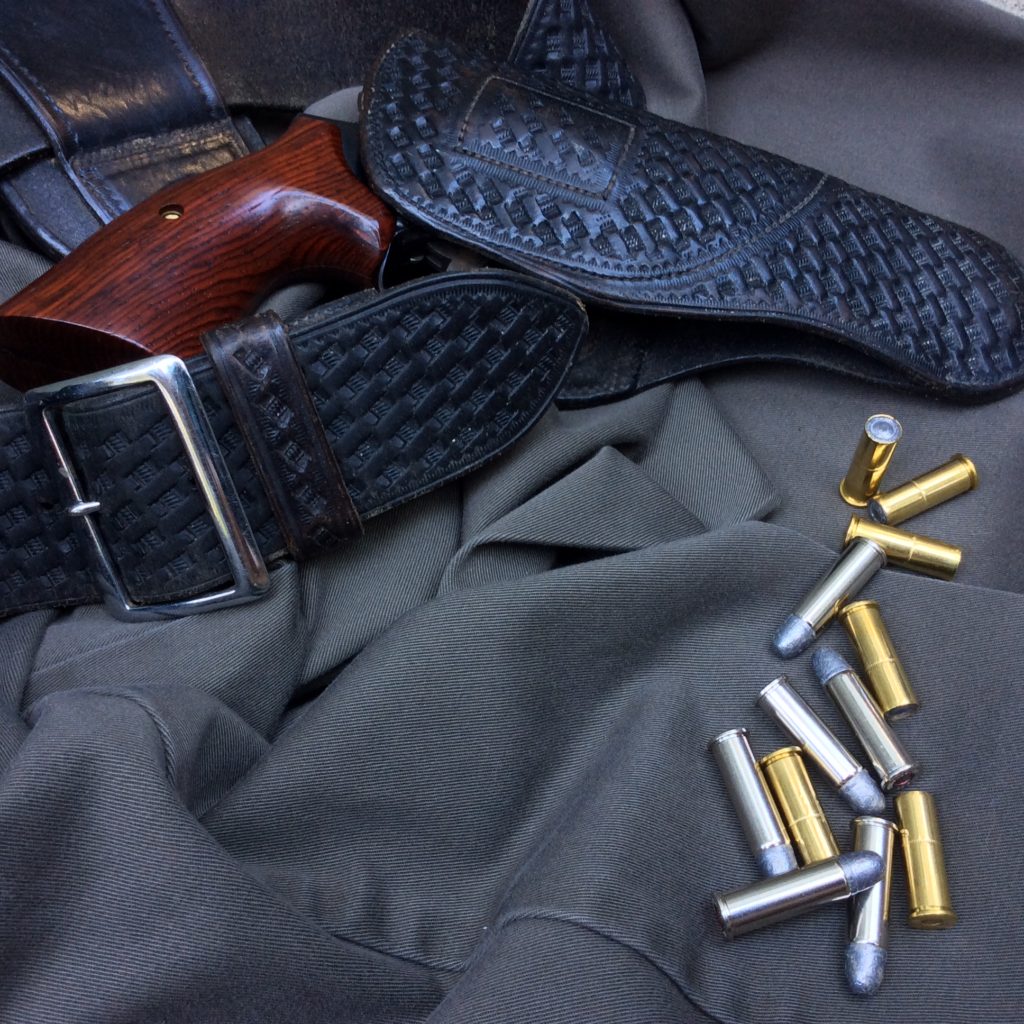
Watershed Moment
“Training light and carrying heavy” was an accepted practice that wasn’t challenged in most places, until four young California Highway Patrolmen were murdered by a pair of violent felons in a gunfight we know today as the Newhall Shooting.
On that cold night in April of 1970, the officers carried revolvers loaded with privately-purchased .357 Magnum and .38 Special (hot Super Vel) ammunition. Despite their heroic attempts to fight their way out of the vicious ambush, none of the three officers who fired their revolvers managed to land a hit on the highly mobile and aggressive pair of felons, and all of them were murdered in the course of just a few minutes.

The Newhall Area office of the California Highway Patrol recently renovated the memorial to Officers Gore, Frago, Pence and Alleyn. This picture was taken at the 5 Apr 17 opening ceremony–47 years after the highly-influential gunfight.
In the aftermath of Newhall, a shocked California Highway Patrol (CHP) tried to understand and explain what went wrong. One of the theories that took hold was a belief that the officers missed their targets primarily because they weren’t accustomed to the powerful recoil of the loads they carried in their guns.(1)
The CHP investigators knew it was common practice for officers to shoot department-issued wadcutters in training, but carry more powerful, privately-purchased ammunition on duty, as the Newhall officers had. Since confidence in the CHP-issued, 158 grain, .38 Special RNL duty round was low, a lot of officers upgraded their duty ammo at their own expense. But few of these officers actually shot the more powerful ammo in training, because it was harder to shoot a good score with it, and it cost money that the poorly-paid traffic officers often couldn’t afford.
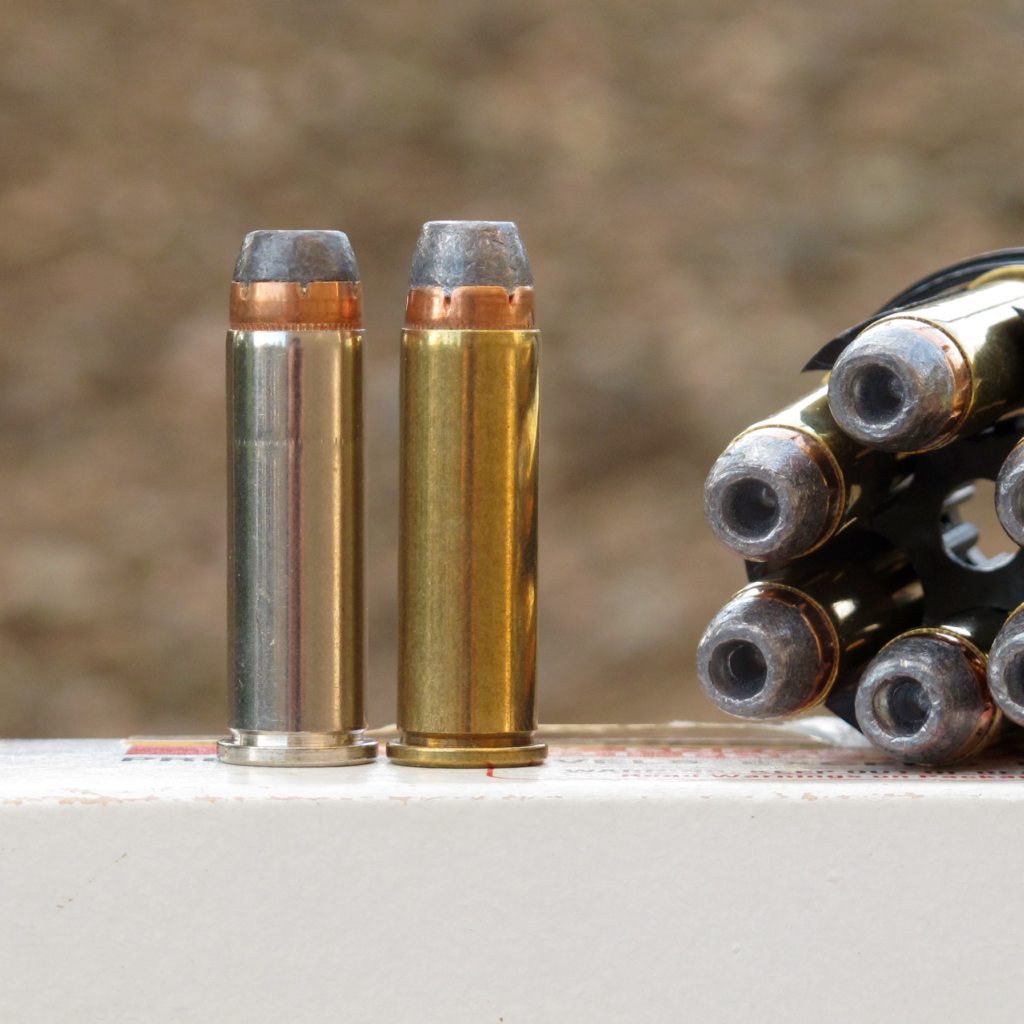 The 110 grain, .38 Special +P+ jacketed hollowpoint was adopted by the CHP as standard issue in the wake of Newhall. The Federal version is shown on the left, and the Winchester on the right, along with a CHP-issue Speed Six loader.
The 110 grain, .38 Special +P+ jacketed hollowpoint was adopted by the CHP as standard issue in the wake of Newhall. The Federal version is shown on the left, and the Winchester on the right, along with a CHP-issue Speed Six loader.
Thus, in the years that followed, the CHP changed its policies to require officers to train and qualify with their privately-purchased ammunition, and later adopted a new, high-speed, .38 Special JHP that was mandated for all training and duty. They encouraged other law enforcement agencies to follow their lead, and it became a tenet of the burgeoning “officer survival” movement that “training light and carrying heavy” was a dangerous practice to be avoided. For generations afterwards, law enforcement trainers across the nation cited the Newhall officers as examples of what could happen if you didn’t train with your hard-kicking duty ammo.
Same Verse
Yet, the practice continued, both in uniform and out. The idea of training with what you carried certainly grew more popular, but the pulls of improved comfort, better target scores, and economy were compelling enough that many shooters and agencies didn’t change their habits.
This continues even today. RevolverGuys know that one of the oft-cited advantages of the revolver is that it’s an omnivore, and doesn’t depend on harnessing the energy of the fired cartridge to cycle the action. If you want, you can shoot anything from mouse fart loads to elephant stompers, and the gun will run. Being able to shoot light loads in training and carry heavier loads for defense is still a big reason why many shooters are steered towards, or gravitate to, the revolver. If you fancy the ultra-light guns made from “unobtanium,” shooting light loads is practically a necessity if you actually want to do any meaningful training with your weapon (unless you enjoy pain and injury).
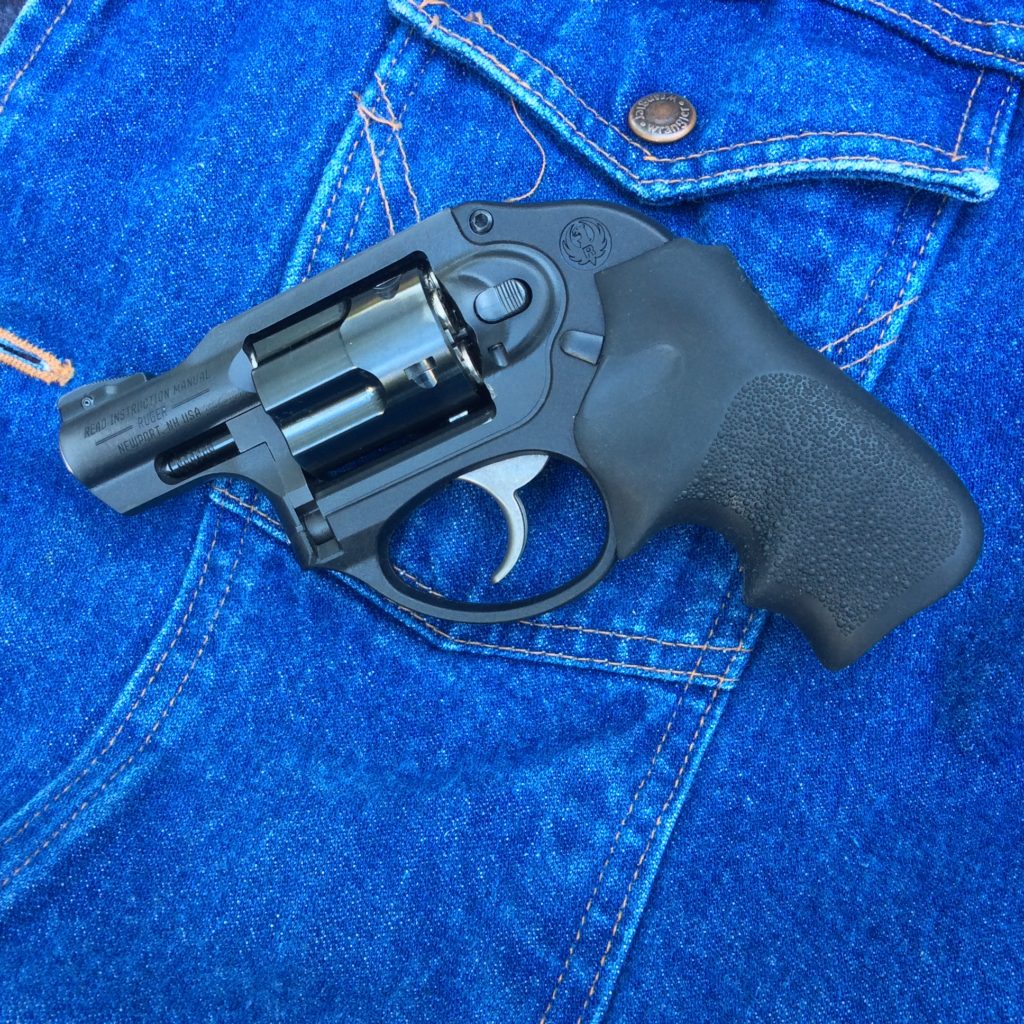
High volume shooting with lightweight snubs can really wear you out fast. If you try to shoot your heavier-recoiling duty loads exclusively, you probably won’t get a whole lot of trigger time. Lighter-recoiling, target-grade ammo will allow you to get more reps with the gun, which is probably a good tradeoff.
Money is still a factor. Most revolver shooters aren’t getting free department ammo to burn, and few of us can afford to train exclusively with premium duty ammunition. As a result, we purchase inexpensive training ammo for most of our shooting.(2)
While most American police don’t carry revolvers as primary arms any longer, the same factors influence the purchase of autopistol ammunition. Many agencies—by design or accident—purchase dedicated training ammo that shoots softer than their duty ammo.(3) The less expensive ball ammunition used for most training and practice is often loaded lighter than the more expensive jacketed hollowpoints (JHPs) used for duty. Similarly, the light-for-caliber, lead-free ammunition—which is increasingly mandated on ranges these days—also shoots softer than JHP duty loads.

These 125 grain, lead free, .40 caliber, frangible cartridges kick a lot less than the 180 grain, duty hollow point loads they replace in training
So, regardless of whether it’s recoil mitigation or economy that’s the driving force, there’s still a lot of shooters out there training light and carrying heavy these days. We send a lot more of the light stuff downrange than the heavy stuff.(4)
Cautions
That’s OK, to a point. Few shooters or agencies can afford to do all their training with duty ammo, but it’s important that you do at least a portion of your training with the full-power fodder.
One reason is that your training ammo and your duty ammo may shoot to a different point of impact. Variations in recoil, velocity, and bullet weights can cause different projectiles from the same gun to print higher or lower than normal, and it’s important for you to know where your bullet will go in reference to the sights.
Reliability is another factor that you have to consider. The autopistols are more finicky in this respect, but even revolvers are subject to ammunition-induced failures. Bullets pull from cases and lock up cylinders, cases stick and cause hard extraction, primers flow into firing pin channels and freeze up guns, and cylinders unlock and open due to recoil forces (or the combination of recoil and a poorly-positioned thumb). You need to know that your duty ammo won’t make your gun choke, and the only way to do that is to periodically shoot some of it.
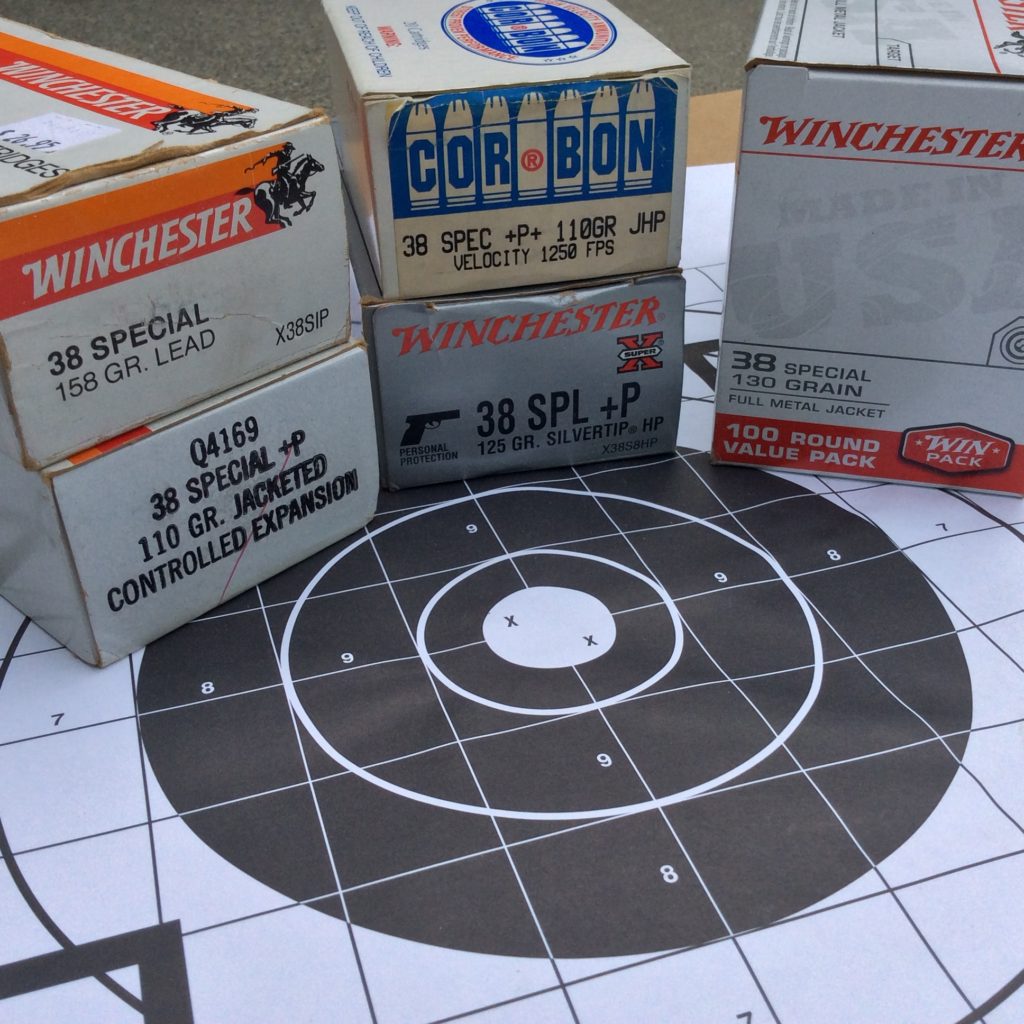
The hotter +P and +P+ loads will definitely behave differently than the standard pressure fodder, and may lead to problems in some guns. A thorough test will allow you to discover these things early, before it’s too late.
Your control of the gun hinges on good technique, and your technique can get lazy when you’re shooting a steady diet of soft-recoiling loads. You can get away with some bad habits in the absence of significant recoil, but those habits will cause your control of the gun to fall apart when you shoot heavier loads. Therefore, shooting some of your duty ammo periodically helps to reinforce proper technique.
Lastly, there’s the issue of confidence. If you’re apprehensive because you’re not sure where your rounds will hit due to sight regulation issues, or because you haven’t learned to master the recoil of your duty ammo through practice, you’re not going to shoot well in an emergency. I firmly believe that stress-induced physiological changes will tend to dull the physical effects of noise, flash and recoil in many cases, but shooting is just as much (if not more) mental than physical, and if you’re distracted by doubts in the moment of truth, it will detract from your performance.
Recommendations
So, I heartily recommend that you take a middle ground approach on this issue. It makes little sense to throw your hard-earned money away by dumping cases of premium holllowpoints into the backstop during training, but you’ve got to shoot some of the expensive stuff on a regular basis to ensure that your technique is solid, the gun-ammo combination is still reliable, you understand where the ammunition will hit relative to your sights, and you have confidence in your ability to perform with it.
I won’t carry a particular load until it has successfully passed a reliability test in my gun (which usually consumes somewhere around 200 rounds in an autoloader, and 50-100 in a revolver), so that’s a good place to start and build your baseline with a carry load.
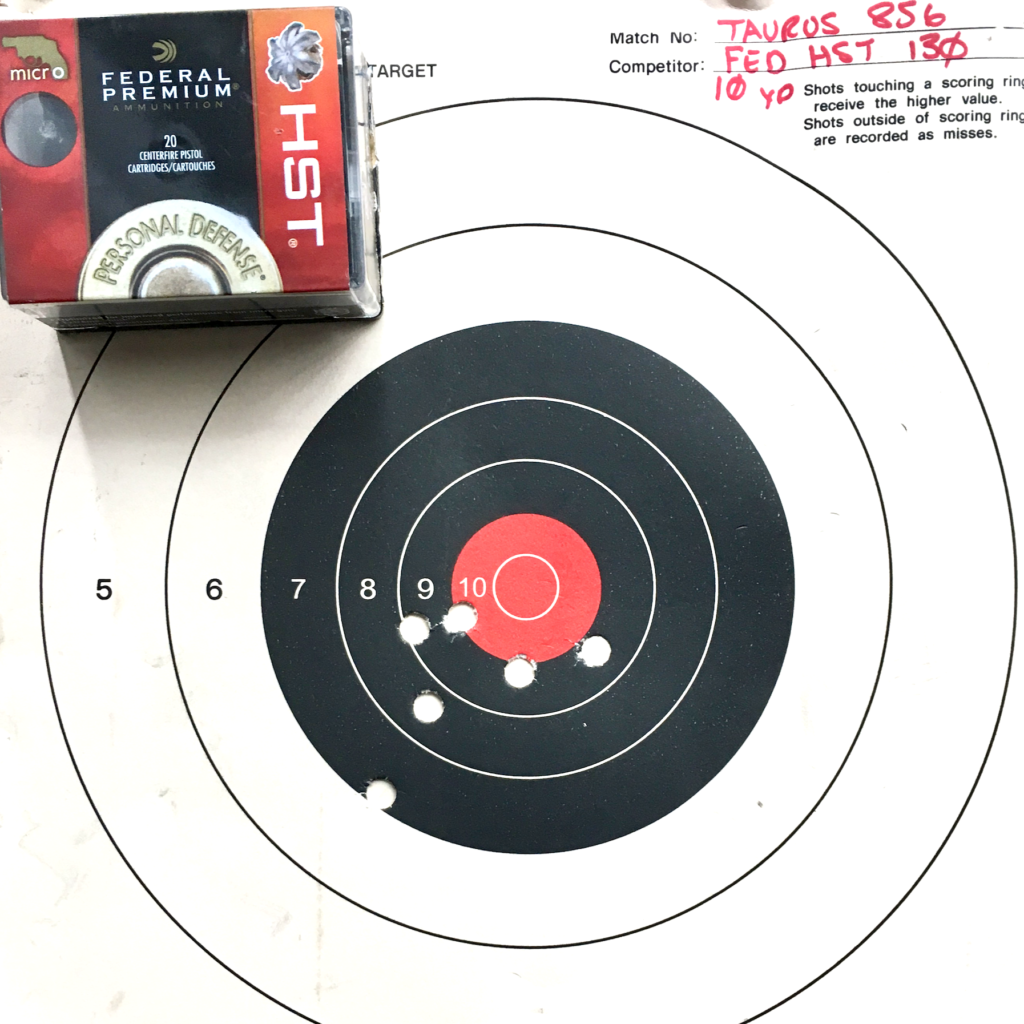
Shooting 100 rounds of your duty load isn’t inexpensive, but it’s good insurance and will allow you to see how it performs in your gun and in your hands.
After that, what’s a reasonable amount for continuation training? That will vary, depending on your skill, experience and training, as well as the disparities in performance between your duty and training ammo.(5) I don’t think it’s unreasonable for a once-monthly shooter to to shoot the carry ammo in his gun and reloading device each time he shows up to the range—if you’re a RevolverGuy, that’s less than 150 rounds a year. If you’re a high-volume shooter, and get to shoot every week, then try to keep to the same schedule, and shoot your carry ammo (in gun, and reload) once a month. That shouldn’t break the bank, but it will be enough for you to achieve the goals we talked about before.
Shooting light and carrying heavy can work with a little planning and discipline on your part. It would be foolish to do all your shooting with light loads and load up with heavy stuff for duty, but you don’t have to fill the tank with 91 Octane every time, either.
Use your head, shoot straight, and be safe out there.
*****
Endnotes
1. In my book, Newhall Shooting: A Tactical Analysis, I argue against this conclusion. The CHP was eager to blame the ammo, but I think this was an oversimplification which ignored important realities about gunfight dynamics, human performance under stress, and deficiencies in the CHP’s firearms training. I think it’s likely that other factors were more important in determining the outcome of the fight. The aggressive, close-quarters ambush subjected the officers to great stress, which diminished their performance due to Sympathetic Nervous System-induced physiological changes. This, combined with reduced lighting, and the felons’ disciplined use of maneuver and cover, made it difficult to hit the bad guys. Furthermore, nothing in the officers’ training had prepared them to deal with these conditions—the formal, competition-style marksmanship training received by the officers was completely inadequate to prepare them for the reality of a fast-breaking gunfight. Thus, blaming the outcome of this complex scenario on poor recoil management may have been convenient for the agency and its training staff, but I don’t think it was fair or accurate to do so;
2. And “inexpensive” can be a relative term! A box of .38 Special ball ammo will cost you almost twice as much as 9mm ball these days, and when we’re in the middle of one of the cyclical ammo crises that have plagued the market since the early 2000s, it can easily double again . . . assuming you can even find it. There was a time when .38 Special was the least expensive, most plentiful, centerfire handgun caliber out there, but those days are history now—“9 is the new 38;”
3. In the age of the autopistol, a certain degree of power is required to make guns run. You can’t go too light without sacrificing reliability, but there are still varying levels of recoil to be found within a caliber, with some loads shooting softer than others;
4. As a result, the same duty ammo can live in a magazine, cylinder, or chamber for many years before it finally gets replaced, which can lead to problems. Even though this is RevolverGuy, we’d be remiss if we didn’t remind the audience that rechambering the same round over and over in an autopistol can damage the case rim, kill the primer, or push the bullet into the case and spike pressures to dangerous levels. Carry ammo constantly gets exposed to the elements and sweat, and gets banged around, so you should rotate it periodically by shooting it up. It will be good practice for you and it will help to guarantee that your lifesaving equipment is well-maintained;
5. In the past 10 years or so, some manufacturers have started to pair up training and duty loads together in the same package. Examples include Winchester’s Train & Defend and Sig’s Elite Performance defense and practice loads. The training loads are ballistically matched to provide similar levels of recoil and hit to the same point of aim as the duty loads, giving the shooter a more affordable training experience. That’s good marketing, but you don’t have to buy one of these combos to accomplish the same goal. With some testing, you can probably find affordable training ammo that’s a good analog for your duty round (or you can reload it, if you’re set up for that). Shooting training ammo that behaves like your duty round is an excellent way to go, but even then, it’s important to shoot some of your actual duty ammo from time to time, to demonstrate reliability with the gun-ammo combination.

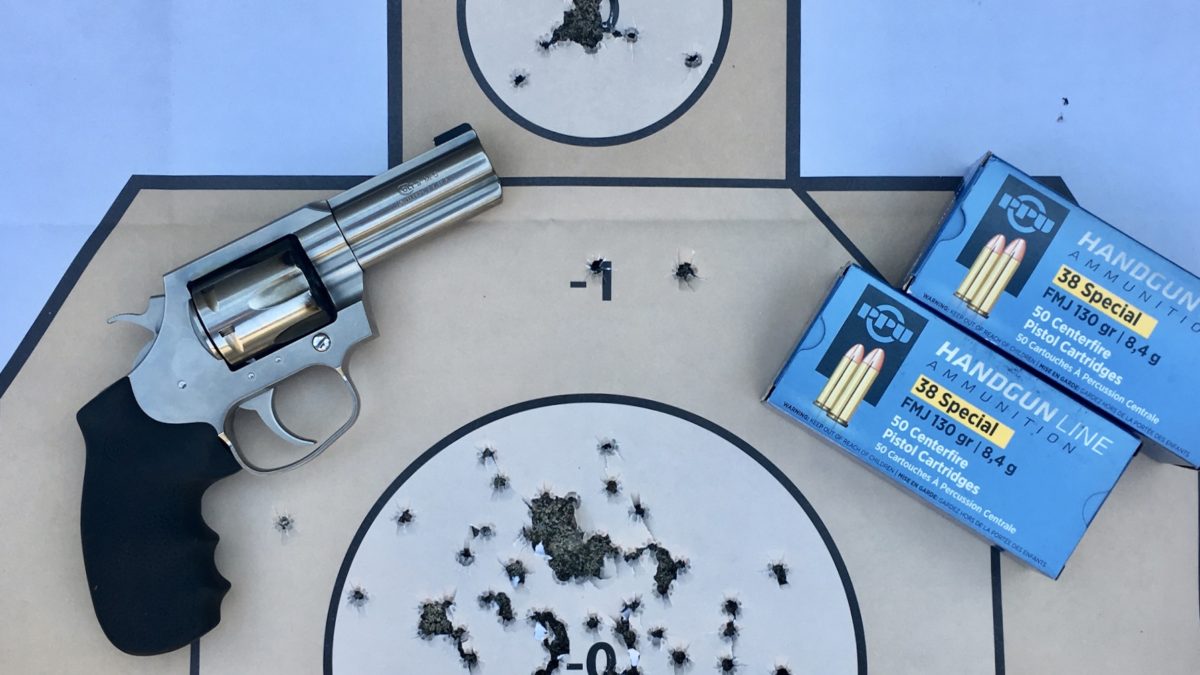
Superb article, Colonel. Alas, I do remember in my academy years (shortly after the automobile replaced the horse) the lowly wadcutter. I had been told of a rumor that our academy had an automated reloading setup (like a Star or Camdex) so they could crank out ammo by the ton for use at the academy. I never did verify that, but I did enjoy depleting the ammo inventory.
We spent the first of two weeks on the range using the 148gr wadcutter loaded to the speed of glue. However, the lieutenant in charge of firearms training had method in his madness. In the wake of Newhall, he used the wadcutter loads to acclimate everyone to the revolver they were being issued (assuming they grajiated) – he emphasized basics, front sight, trigger press, followthrough. After everyone was able to settle comfortably with the wadcutters came the 158 gr LSWC loads for a few days. The transition was a lot smoother for many of the recruits. Then came the .357 Magnum. They loaded up jacketed soft point loads so (a) we didn’t have to spend all night scraping smeared lead out of the gun; and (b) we were introduced to the full power magnum load. They didn’t skimp – it was a full power round. After the range, it was another week back in the classroom, and then a final trip to the range. We shot one round of the course with the wadcutters, and the round for score with the magnums.
For anyone serious about getting proficient, I heartily recommend getting into reloading your own. Yeah, the up front cost is expensive, but compared to even cheap Tula .38 Special at $0.22 a round, you can buy components in bulk and save a lot of money over time. After years of beating myself to death with a Lee Loader, I got one of the Dillon 650s when they came out – had all the goodies, and I felt like I was broke (because I was), but between the amount that got shot up between practice, matches, qualifications, etc, it had paid for itself in two years. It gives you a kinda warm, fuzzy feeling to see that you’ve reloaded a .357 Magnum case so many times that it splits all the way down the side on its last reload. (G)
The best part about reloading the .38 Special is that it is a VERY forgiving and easy round to load. You can do 2.5 gr of 231 under a 148gr wadcutter and have wonderfully comfortable mousse phart loads, or you can crank it up to a load that I won’t publish, but pushes a 158gr LSWC at nearly 11oo fps. Take the wife, start her with the mousse pharts, and work her up to the full power Elmer Keith loads.
I’ve been a reloading “lurker” for decades. I read all the articles in the magazines, but have never made the jump to buying the gear and starting my own production. I will definitely join the club someday, and plan to spend a significant part of my retirement cranking out ammo and blasting it all up the next day. A commercial reloader near me puts together a .38 Special load with Speer 147 TMJ bullets that’s the most accurate load I’ve ever fired in a handgun–I need to find that recipe!
It is a fun hobby that gets me out shooting more. My up-front costs were about $400, and in the past 3 years I have loaded and shot about 4K rounds. I have two used single-stage presses and gotten nearly everything used via eBay. In my experience .38s, .357s, and .45s are a joy to load and some of my .38s are on their 10th loading or more.
It looks like there’s a lot of used–but good–equipment out there for very good prices. That would be an excellent way for me to go when I make the jump. The interest is there, but just not the time, right now. I look forward to joining the fraternity though!
I started out shooting all of my revolvers with 158gr, mostly LRN, ammo for practice. Turns out that heavy bullets, even when not +P, have noticeable felt recoil even in a lighweight snub. Probably the reason I gave up on the Ruger LCR, since I didn’t consider lighter weight ammo.
Since then, I’ve reoriented and switched over to 130-132 FMJ ammo for practice and have had no issues. I’m still a novice shooter, but my accuracy has been satisfactory even with the fixed sights on my revolvers. The Hornady CD 110 non+P that I carry for self-defense has been surprisingly accurate in my wheelguns. I did dabble with the Federal 130gr +P HST, and I like it, but I’ve found it does not mix well with speed loaders. So I’ve gone back to the Hornady CD to maintain consistently between what’s in the cylinder and what’s in my speed loaders.
Hornady makes excellent ammo, and I’m not surprised it’s so consistent for you. The profile of that FTX bullet is certainly more suitable for speed loaders.
Around here, it’s much easier to find the 130 grain loads, and they’re less expensive. I found that the 130 grain loads shoot closer to the sights on my J-frame than the 158 grain loads do, anyhow, so I think you’ve got a good thing going, there.
Axel,
My 357 Magnum LCR is almost brutal when shooting 158gr anything through it. 125gr loads were not much better, and had more pronounced muzzle jump for me. I tried some of my 180gr WFN lead loads, and never looked back. This combination makes for a pleasant shooting lightweight revolver. The addition of a Pachmeyer G10 stock made things even better for me, as the factory rubber was not even close to working in my hand.
Now, I must say that my 180gr handloads are not top of book, nor bottom of book, loads; but they work very well in my LCR, Wiley Clapp GP100, and all my leverguns. This load just so happens to impact to point of aim for both revolvers at my chosen distance for each very nicely, along with providing a good, solid choice for most endeavors with the revolvers and leverguns.
Mike, thank you for this timely advice. What do you think of shooting your “duty” loads after warming up with lighter ones? That is my usual drill. I shoot, at best, twice per month.
I also reload +p round very similar to the factory ammo kept in our guns.
There’s a lot of ways to skin the cat, but for my carry guns, I like shooting up my duty loads first. I don’t unload my gun before going to the range (which is OK, on my home range–check your local rules), so I get to verify that my gun would have fired properly if I’d needed it to (which gives me extra confidence in the gun and ammo). It also gives me a reality check on what my “cold” skills are like–could I make that headshot cold? Is my grip good enough to control the duty loads?
After I shoot up the duty loads in the gun, I’ll switch over to the training loads for the bulk of practice. Before I wrap things up for the day, I’ll load the guns with the spare mag or speed loader that I showed up with, to “recalibrate” myself with the duty loads.
That’s just how I do it. I wouldn’t argue if you had another method you preferred.
any plans to get a ratty $250 police-trade in K frame 38 special for review? Might be an attractive and accessible way for people to become “revolver guys” as well
Prices have gone up a bit, but in 2017 I scored a prison guard’s trade-in S&W 64, $300 cash. Nothing ratty about it. It is one of our two home-Defense handguns.
Same guy has them now for $340, but I bet he would still take $320 if you flashed the cash.
They are still out there and that gun shoots really well.
That would be a very neat article, and I’m all for it! It’s not really in the budget for us right now, though. If you’re interested in seeing an article like that please consider supporting us on Patreon.
My last cylinder or two is always the good stuff… Like Mike, I want to reset to full power loads.